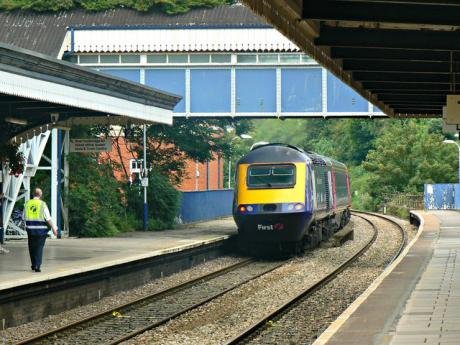
11 March 2016
This article was written by Lynn Sloman, founder of Transport for Quality of Life, and originally published on openDemocracyUK.
Humpty Dumpty sat on a wall. Humpty Dumpty had a great fall. All the king’s horses and all the king’s men, couldn’t put Humpty together again
Recently I was at a meeting where private investors were invited to pitch to the Department for Transport about why and how they could get involved in running bits of our rail infrastructure. The meeting was called because Nicola Shaw is shortly going to publish a report to the Government recommending what should be done with Network Rail, the body responsible for maintaining and improving our national rail infrastructure – the tracks, tunnels, signalling and 18 major stations.
All sorts of options for the future of Network Rail have been mooted. These range from full privatisation, splitting up Network Rail and selling regional ‘concessions’ to the highest bidder, or selling off the 18 big stations that are operated by Network Rail.
The truth is that whatever the government announces in the next few weeks, this is just the beginning of the complete dismantling of Network Rail. And this will only make the option that most people want, publicly owned railway, even harder to achieve.
At the meeting DfT wasn’t giving anything away. It is very unlikely they will contemplate wholesale privatisation, because the risks – as shown by the multiple train crashes that were a consequence of the asset-stripping in the 1990s by fully privatised Railtrack – are too high, and public opposition would be too strong.
But even ‘part-privatisation’ of Network Rail is a scary prospect. Here are ten reasons why I think it is a very bad idea indeed:
1) Financing ‘solutions’ so we can ‘buy now, pay later’ are like payday loan companies for governments.
Innovative financing ideas promise we can have our shiny new rail enhancements this year and pay for them at some time in the future. But the debt and interest keep piling up, and sooner or later, it comes to a nasty crunch. At root, Network Rail faces a funding problem, not a financing problem. There is no such thing as a financing solution to a funding problem. Before it was formally brought back under public control and ownership last year, Network Rail and its privatised predecessor Railtrack racked up an eye-watering £38 billion debt that the Government underwrote but pretended it had nothing to do with. Now that the debt shows up on the Government’s balance sheet, the Treasury has realised that spending on the never-never can’t go on indefinitely. Yet the Government is still begging the investment bankers for more. And the more we take now, the more we will have to pay eventually.
2) It’s jam today whilst losing our daily bread tomorrow: less money will be available for investment in train services later on.
Some people have suggested that bits of Network Rail could be offered to the highest bidder on a 30-year concession. This is what happened with High Speed 1 (HS1), which was sold to two Canadian pension funds in 2010. They paid the government £2.1 billion, but now we are paying them back (plus some), via a complex merry-go-round in which our train tickets plus government subsidy provide income to private train companies, who then pay ‘track access charges’ to HS1. The £2.1 billion that the government received up-front means the problem of lack of funding for public transport has been deferred, but it hasn’t gone away. And we have now lost the potential source of ongoing revenue income that HS1 should have provided to us.
3) Selling off stations and railway routes will fragment the railway – making it more complex, dysfunctional and expensive
HS1 was (relatively) easy to sell off because it is fairly self-contained and the infrastructure is mostly brand new. The rest of the rail network is precisely that – a network – and so complex legal agreements will be needed between the concessionaire and the rest of Network Rail, about timetabling, access and network planning, and further agreements will be needed with every single train company that crosses the concessionaire’s tracks.
If stations are sold off, there will be a conflict between the priority of their new owners, who will want to maximise profit from retail income, and the operational needs for efficient movement of passengers. Legal agreements will be drawn up in an effort to cover every eventuality. But when an unforeseen problem crops up (as it will) there will be lengthy legalistic discussions instead of a pragmatic common-sense workaround. The winners will be the lawyers, investment bankers and consultants who will advise all sides both during and after the concessions are let. We should be stitching the already-fragmented railway back together, not continuing to tear it into ever smaller pieces.
4) Fragmentation by privatising bits of Network Rail will make the railway more dangerous.
Running a railway is a safety-critical activity. If different bits of the rail network have different practices for deciding train paths and for traffic control, or different procedures for closing the railway to carry out maintenance work, there’s the potential for things to go wrong. Private investors see health and safety procedures as a key area where financial savings can be made, so they are likely to bring pressure to bear here, potentially with catastrophic results.
5) Every player in a fragmented privatised system has to take their cut.
Once you start spinning off parts of Network Rail to the private sector, costs go up because the concessionaire has to make a profit, and their sub-contractors have to make a profit, and the sub-sub-contractors have to make a profit too. That means a lot of money leaks out of the system. By contrast, when Network Rail decided to stop outsourcing maintenance to private contractors and to bring the work back in-house, they saved £264 million per year.
6) Rigid concessions and station sell-offs limit our options to improve the railway.
Concessions of 30 or even 50 years have been mooted. That’s a very long time to set the railway in aspic. What if, ten years on, it makes sense to build a new train line, or to improve a parallel line, or build a new station to serve a major housing development or business site? What if passenger numbers grow so that changes to the layout of a sold-off station become necessary, and this means less space for retail units? What if (heaven forbid) a terrorist attack means that stations have to be completely redesigned with airport-style security, again meaning there is less space for retail units? All such options could be ruled out, or subject to lengthy renegotiation and heavy ‘compensatory’ payments. The public interest, and the interests of passengers, will be subordinate to the financial interests of the concessionaires. Privately financed (PFI) hospitals have shown how this approach stores up costs and problems for the future that can be crippling. We should learn the lesson.
7) Handing over essential infrastructure is a ‘heads you win, tails we lose’ situation.
Repeated evidence from past sell-offs is that the government almost always sells at less than the full value, and the private buyers then go on to make windfall profits. We’ve seen this recently with Royal Mail and Eurostar. But occasionally the reverse happens – something goes wrong, and the private buyer realises that their profit forecast was over-optimistic. When that happens, the ‘Special Purpose Vehicle’ or company that has been set up to run the concession can be wound up, and the problem handed back to the government to solve. That happened repeatedly with train operating franchises on the East Coast Main Line. The same could happen with infrastructure concessions or station sell-offs. Railtrack received a substantial bail-out before it went into administration and the government was later forced by threats of legal action to fund Network Rail to buy out all the shareholders.
8) Concessions and sell-offs are a distraction from the much more important question: how do we fund a better railway.
At present, many beneficiaries of the railway in the UK are not making a fair contribution to improving it. Land and property owners benefit from rises in the value of their land or property in places where there are rail improvements. Many countries capture some of this windfall profit through what’s called tax increment financing: the government issues bonds to finance the rail improvement, which are then repaid using the uplift in property taxes. Employers close to railway stations benefit from having a bigger pool of employees to choose from, as more people can reach their offices or factory by train. Most French cities therefore levy a payroll tax on employers, which part-funds the public transport network. Motorists benefit from less congested roads thanks to the railway, and in parts of the USA and other countries they therefore pay charges that support public transport, including rail. Once all these wider beneficiaries (landowners, businesses, motorists) start making a contribution, as well as passengers and the Government, the funding becomes sufficient to invest in a better railway.
9) The obsession with privatisation is blinding us to the governance structure that makes most sense for our railway.
Instead of breaking the railway up in order to sell bits of it off, we should be putting track and train back together, under the control of a single ‘guiding mind’, as France has recently done on grounds of efficiency. Public funding for the railway should be channelled via regions and cities, so that they can negotiate with Network Rail to get the improvements they most need in order for their economies to thrive. We need an organisation running our railway that is 100% focussed on the important task of delivering a vital public service – an organisation run by people who are proud to act in the public interest, and who care passionately about doing that. We don’t need a clutter of lawyers, spinning a complex and ever-expanding web of contracts that put the interests of investors before the public interest, negotiated in secret away from the public eye.
10) Part-privatisation is not an innocuous experiment, it is privatisation by stealth.
There has been a lot of briefing in the run up to publication of the Shaw Review about ‘all options being on the table, including full privatisation’. But don’t be deceived. That’s just designed to soften us up, so that when it’s announced that some stations will be sold off, or a concession will be let for 30 years for one of Network Rail’s routes, everyone will breathe a sigh of relief and believe that the worst has been averted. But that is emphatically not what the right-wing ideologues have in mind. They envisage this as the beginning of a process of lots of small steps, so that nobody notices what is happening till it’s too late. And as one of them – also invited to the meeting with investors at DfT – has recently said, “Once the disaggregation [of Network Rail] has been completed, then the rump company can be sold to the private sector.”
The truth is that what the government announces in the next few weeks is just the beginning of the complete dismantling of Network Rail. Ultimately, the many fragments and multiple contracts lasting over different time periods will make it too complicated for any government to ever put the railway back together again. This will be the privatisation that can never be undone. A Humpty Dumpty railway that will be a disaster for passengers and taxpayers. But the government seems to think that will be just fine if corporate interests get a nice lucrative piece each.

Image by Brian Robert Marshall, some rights reserved.



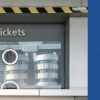


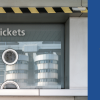


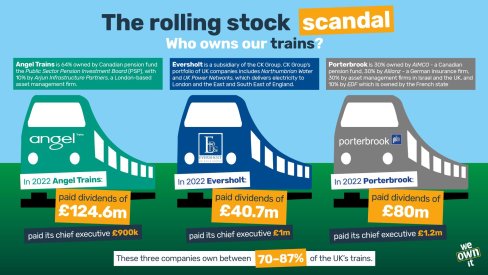
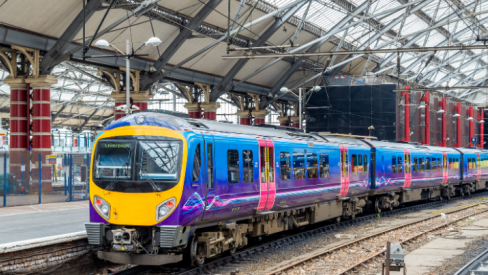
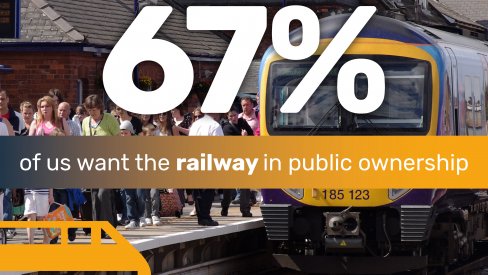

Comments
Bill Gleave replied on Permalink
In the early days of rail the owners thought it was a good idea to sell off station food concessions as a whole. After years of lost profits and price hikes they were obliged to buy the concessions back at a grossly inflated price. History will repeat itself particularly where the Railway is concerned.
Selling off stations is bad enough but selling off overhead cabling is bonkers.
Add new comment